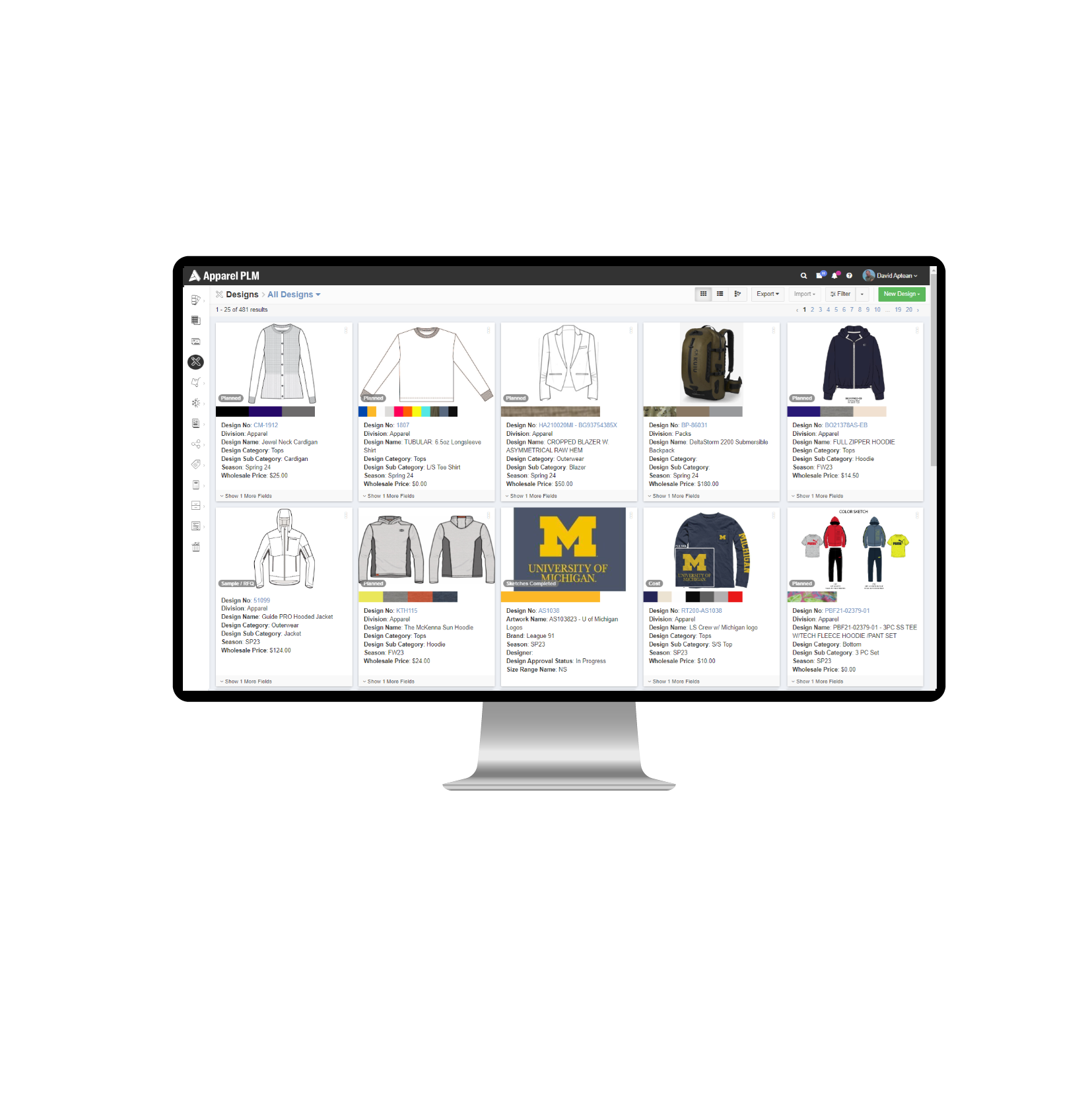10 Ways Cloud-based PLM Software for Fashion Improves Workflow and Profits
10 Ways Cloud-based PLM Software for Fashion Improves Workflow and Profits
10 Ways Cloud-based PLM Software for Fashion Improves Workflow and Profits
Oct 4, 2019
 Aptean Staff Writer
Aptean Staff Writer 
Major apparel brands face many challenges in the current economy, from how to move products to market faster in this era of fast fashion, to how to improve sustainability in one of the world’s most wasteful manufacturing sectors. Product Lifecycle Management (PLM) software can be an important tool for fashion and home goods companies to improve the efficiency of workflows while increasing profitability and competitive positioning. Cloud-based PLM delivers all of the benefits of PLM with a few unique and important advantages. Here are 10 ways cloud-based PLM helps fashion and soft goods brands improve their workflow to reduce costs and improve profitability:
1. Decrease Time-to-Market for New Products
It’s not uncommon for a new product to take 8 to 10 months to go from design concept to production. With cloud-based PLM software speeding up your workflows and helping your teams work efficiently, you should be able to reduce your average time-to-market by a considerable margin. PLM streamlines and automates front-end processes while centralizing your product data. Designers and product managers spend less time on data entry and no longer have to manage lines by updating multiple systems or spreadsheets.
2. Cloud-Based PLM Can Be Implemented Faster, With Lower Up-front Investment
With on-premise software, a company needs a server(s) and an IT department to implement the solution, which can take many months. IT must maintain the system by installing updates that fix bugs and deliver new features. On-premise software is purchased up front and requires an additional support/maintenance contract. In contrast, cloud-based PLM software requires no hardware investment, so a company can be up and running very quickly—often in one to two months. There’s a lower up-front because monthly user subscription fee includes software, hardware and support. New features become available as soon as the vendor releases them, so brands benefit from a constantly improving solution, with a lower total cost of ownership.
3. Accelerate Design, Development and Sourcing
Cloud-based PLM provides a centralized system to store and organize all of your product information and make it accessible at anytime from anywhere. Designers can easily locate and pull up past designs to make modifications and try out new ideas. PLM streamlines design material approvals and helps track sample evaluations. PLM should help designers become more productive by enabling them to work in their favorite design tools, such as Adobe® Illustrator®. When changes are needed, designs can be modified and resubmitted in less time.
4. Foster Better Teamwork
Cloud-based PLM provides real-time collaboration tools that help designers, product managers, technical specialists and sourcing specialists work together more easily—from anywhere in the world. Communication tools like system-wide commenting and user/team notifications help keep everyone on the same page. PLM can also keep track of assignments across design milestones and manage handoffs between steps of the workflow.
5. Reduce the Burden of Compliance
As the world has increased its consciousness around the conditions in which fashion is created, inadequate compliance can expose brands to costly litigation and reputational damage. PLM helps brands track product information and supplier certifications for compliance with product safety, environmental impact/pollution, and labor condition regulations.
6. Improve Collaboration With Global Supply Chain Partners
Across time zones and languages, PLM houses the product information that creates a single version of truth. It automates tech pack development, providing templates and measurement tools that let product teams quickly create BOMs, measurement pages and grading views. Production facilities can access tech packs anytime and reach out to the product team using PLM communication tools. PLM also streamlines vendor quotes, bids, samples and approvals.
7. Reduce Costs and Waste
PLM reduces cost through improved efficiency, easier collaboration, and reduced waste. With the information manufacturers need to maintain quality, rework and scrap can be reduced. Sourcing and costing automation helps brands purchase parts and fabrics in larger volumes at better prices.
8. Boost Calendar Visibility and Control
Cloud-based PLM provides forward-looking visibility and control over your seasonal calendar. It empowers your product team to create line sheets and presentation boards more easily to communicate details to buyers. No more rushing to get the new seasonal line out.
9. Cloud-Based PLM Scales Easily As Your Business Grows
As your business becomes more successful, manual processes and Excel spreadsheets can’t keep up. With cloud-based PLM, you pay only for subscriptions required by your present employees and can quickly add more subscriptions when you hire new people.
10. Make Better Business Decisions
Real-time information and analytics support better-informed and timelier business decisions. PLM REVO is a cloud-based PLM specifically designed to help fashion and soft goods brands improve: Communication, Design, Tech Pack Development, Line & Seasonal Management, Material & Sample Tracking, and Sourcing & Costing. Want to learn more about how PLM REVO enhances workflows and profitability? Contact us today or schedule a demo.
Ready To Start Transforming Your Apparel Business?
We’ve got the specialized PLM solutions you need to conquer your fashion industry challenges.



